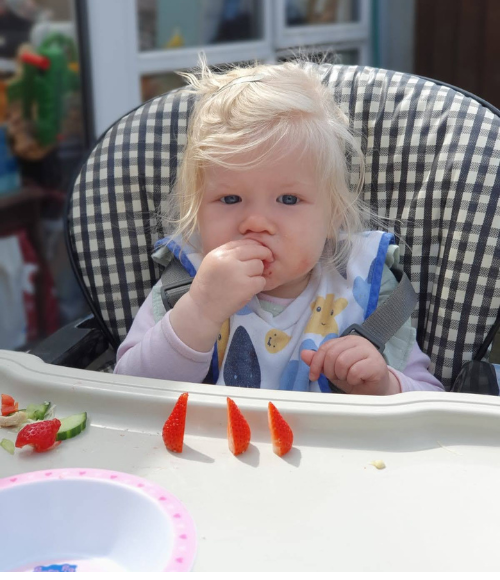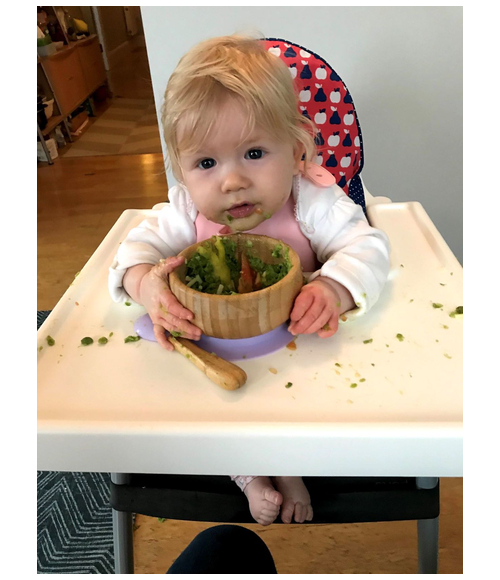Toddler Mindful Eating
‘Mindful Eating’ is the term we use to encourage slowing down at meals and snack times in order to listen to our tummy as to when we feel full and also what feelings and emotions may be helping or hindering our enjoyment of foods.
With small children it can be difficult to get them to sit still at mealtimes so mostly it’s about turning eating into a game or fun chat – get involved with them where you can!
- Whenever possible, sit together at a table. This helps to:
- Limit distractions (for them and you! Leave your phone in another room!)
- Encourage engagement/talking
- Slow eating down – if children are bored they will eat quickly to leave the table asap.
- Role model – children will learn their eating habits and table manners from you
Eating is a social activity that we enjoy most when around a table with family and friends
- Try not to rush mealtimes.
I know that we are all busy with a million things on our to do list but, if our child sees us distracted and constantly up/down at the table then that is what they will learn and want to do too. We also tend to gobble down food quickly in order to move on to the next thing but getting your child to engage with their food and bodies takes time and practice. Put 20 minutes aside for each mealtime – or however long you feel is needed to practise and engage with these skills – and go with the flow, no matter how messy!
- Encourage them to use their 5 senses (e.g.)
- Sight – What’s on your plate? Can you describe what it looks like? Colour?
- Smell – What does it smell like? Does it smell fresh/sweet?
- Touch – What does it feel like? Is it soft and squidgy in your fingers? Is it hard to pick up with your fork?
- Sound – Does it make a noise when you touch/eat it? Does it crunch loudly in your mouth?
- Taste – What does it taste like? Is it salty/sweet/sour? Does the first bite taste different to the second/third/fifth!? What do you think tastes better – the carrot or the salmon? Does it taste different with your eyes closed!?
Apart from the Sight part(!), invite them to close their eyes for the full experience
- Have them prepare and/or cook alongside you.
This way they get to see what is going into their meals and the effort required. Food is usually appreciated and enjoyed more after the satisfaction of helping to make it.
Then, while eating, you can discuss the ingredients.
For example:
Can you remember what we put into this food? Can you find the peas? Can you taste the tomatoes?
This helps to encourage children to be mindful and aware of what goes into our food and therefore our bodies.
You can also take it further…
- Discuss the benefits these foods have for our bodies
(keep it simple and age-appropriate for your child)
For example:
Oranges are great because they contain vitamin C which helps prevent colds.
Salmon is a source of protein which helps our body to grow tall and strong.
Milk contains calcium which helps bones to grow > we need strong bones to be able to lift and carry heavy objects > can you see any heavy objects we could try to lift after we’ve drunk our milk?
- Serve small portions and invite them to ask for more if they are still hungry
This will often work for both non-eaters (children can be overwhelmed by the amount of food served and then won’t touch any) and fast-eaters (serving smaller portions allows more time for the tummy to fill and for the child to realise whether they’re still hungry or not – leave the extra food in the kitchen and out of sight/reach rather than on the table so it takes time to fetch it and they’re not distracted by it)
When they ask for more, or to leave the table because they’re finished, ask them how their tummy feels. Is it full and satisfied? Does that feel like enough food to give you energy until the next mealtime? Are you still hungry/feel empty and would like to eat some more?
If they say they feel full but still ask for more that’s ok, give them some more. The important thing is to get them thinking about the connection between what they eat and how they feel.
One example:
If your child doesn’t eat much of their meal say: “I can see you wasn’t very hungry” rather than “I can see you didn’t like that food” OR
If your child eats well say: “I can see that you was hungry” rather than “I can see you liked those foods”
This enforces the connection between food and feelings of fullness/satiety rather than simply eating a food because they like it (or not eating it because they dislike it).
- Child looking bored and uninterested? Try a food-centred activity
For example:
- You/your child can draw pictures of what is on their plate (or the ingredients in their meal) and they have to find it (e.g. pea) or that flavour (e.g. tomato)
- Make a funny face or picture using the food on their plate
- How many peas/beans can they pick up with their fork?
Let your imagination run wild and enjoy!





